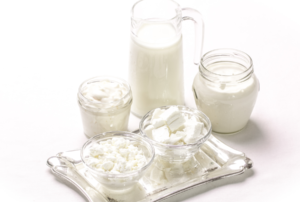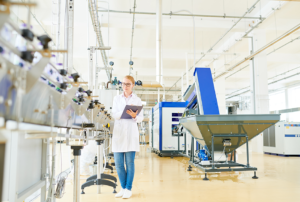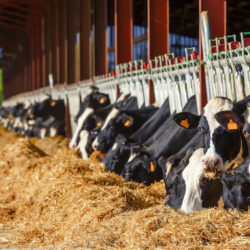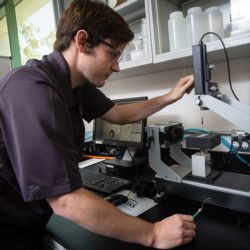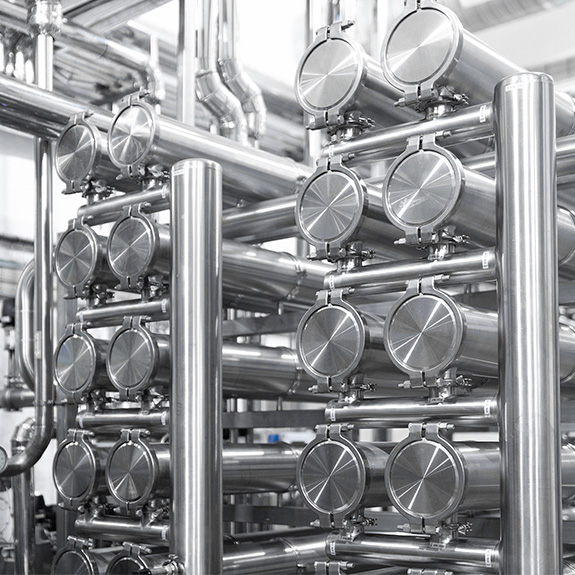
Not All Membranes Are Created Equal: How to Find the Right Fit for Your Dairy Process
Membrane separation is one of the most transformative technologies in dairy processing. Whether it’s making high-protein Greek yogurt, standardizing milk for cheese, or reclaiming water for reuse, membranes allow processors to separate dairy components with precision while preserving the flavor, texture, and nutrition consumers expect.
However, not all membranes or applications are created equally. The right choice depends on your product goals, your feed composition, and how the process fits within your broader operation. When selected and operated thoughtfully, membranes can enhance quality and consistency, reduce costs, and even improve sustainability.
So how should you approach choosing the right membrane for your process?
Where do I start?
It might sound counterintuitive, but the best place to start is the end. Every successful membrane application begins with a clear understanding of the final product you want to create. Are you concentrating protein for a powder or beverage? Standardizing milk for fermentation? Recovering water from whey permeate? Once that end goal is clear, the composition of your feed stream becomes the foundation for all other choices.
What components do you want to retain? Or conversely, what do you want to remove? Each molecule has a size, expressed in Daltons (Da), that determines whether it will pass through the membrane (permeate) or be retained (retentate). In other words, membrane selection starts with matching pore size to the molecules you care about most.
Take whey proteins, for example. They typically fall between 14,000 and 18,000 Da. A membrane with a molecular weight cut-off (MWCO) of around 10,000 Da will retain those proteins while allowing smaller molecules like lactose and minerals to pass through. That makes it a great fit for applications like whey protein concentrate.
How do I know which membrane type fits my needs?
Each membrane type plays a different role in the separation spectrum. Microfiltration (MF) has the largest pores and is ideal for removing fat globules, spores, or bacteria without significantly impacting the product’s composition. Ultrafiltration (UF) focuses on retaining proteins while allowing sugars and salts to pass through. Nanofiltration (NF) sits between UF and reverse osmosis (RO), retaining small solutes like lactose while partially removing minerals and water. Finally, RO has the tightest structure, retaining nearly everything but water.
The type of membrane you choose should align with what you’re trying to separate or preserve. What role does this membrane play in the broader process? Is it a refining step, a concentration step, or part of a sustainability initiative like water reuse? If your goal is to reduce microbial load in milk before cheese production, MF might be the right fit. If you need to concentrate proteins or lower lactose, UF or NF will get you there. The key is to think functionally, not just technically.
What role does molecular weight cut-off (MWCO) play in membrane selection?
If the membrane type determines the “family,” the MWCO defines the personality. MWCO is essentially the sieve size of the membrane. It sets the boundary for which molecules can pass and which are held back.
A tighter MWCO retains more material but also increases the risk of fouling and may reduce flux. A looser MWCO often allows for higher throughput but could allow valuable material to be lost to the permeate. The right balance depends on your product goals and how you value yield, purity, and throughput.
Imagine a processor developing a Greek-style yogurt base. They might choose a tighter ultrafiltration membrane around 10 kDa to retain more proteins and fats, creating the rich, spoonable texture consumers expect. On the other hand, a company producing a drinkable cultured beverage might prefer a slightly looser membrane to allow some whey proteins through, giving a lighter, smoother finish.
Choosing a membrane with the right MWCO ultimately shapes not just the efficiency of the process, but the experience of the final product.
How do processing conditions affect performance?
Even the best membrane can underperform if the operating conditions aren’t right. Pressure, temperature, and flow all have major impacts on separation performance.
Higher pressures can improve throughput but may cause compaction and premature or even irreversible fouling. Lower pressures are gentler but can decrease throughput and limit separation efficiency.
Temperature affects the product viscosity and solubility, which can make or break processes involving high-protein or high-fat feeds. Ensuring proper flow rate impacts how evenly the membrane surface is used and how well the solids interact with the membrane surface.
For most processors, pilot testing is the best way to find the sweet spot. Running small-scale studies under realistic conditions provides invaluable insight into how a particular membrane behaves with your product and how changes in processing conditions can affect your product.
What about sustainability and water reuse?
One of the biggest advantages of membrane technology is its contribution to more sustainable operations. Unlike temperature-driven concentration processes, membranes require no phase change and use much less energy. That’s not just good for the environment; it’s good for your bottom line.
Membrane separation also enables water reuse in a way that was once impractical. Permeate from RO systems, for example, can often be polished and reused as process water, cleaning water, or even boiler feed. This can significantly reduce total water demand and wastewater generation, helping processors meet tightening environmental goals while cutting costs.
As sustainability moves from “nice to have” to “non-negotiable,” membranes are increasingly seen as both a production tool and a sustainability strategy.
How should I approach membrane selection overall?
Choosing the right membrane is less about finding the “best” one and more about finding the right one for your process. It’s a combination of understanding your product goals, knowing your feed characteristics, and fine-tuning your MWCO and operating parameters for performance and efficiency.
The smartest approach is to start with data, not assumptions. Pilot tests, performance tracking, and open collaboration with our Applications Engineers help identify which options will deliver the best balance of quality, yield, and cost.
Membrane technology continues to evolve rapidly, with new materials, configurations, and cleaning strategies making systems more robust and efficient than ever. Staying curious and informed is the best way to keep your operation competitive.
Frequently Asked Questions
One of the biggest mistakes is choosing a membrane based solely on type (like UF or NF) without considering the specific product goals or feed composition. Factors such as feed variability, temperature sensitivity, and cleaning frequency all influence how a membrane performs long term. Pilot testing and performance data are the best ways to avoid underperforming or over-engineered systems.
Pilot testing bridges the gap between lab data and real-world performance. It allows you to evaluate different membrane types and MWCOs under your actual operating conditions, including your specific feed, temperature, and cleaning protocols. This not only helps identify the right membrane but also optimizes operating parameters before full-scale investment.
Membranes enable energy-efficient concentration and water reuse by separating components without heat or phase change. For many dairies, this means lower energy consumption, reduced wastewater, and the ability to recycle process water. Selecting the right membrane for reuse or recovery applications can have measurable impacts on both environmental and financial performance.
Related Resources in the Knowledge Hub
Let’s Keep in Touch
Follow Solecta on LinkedIn and join our mailing list to keep up with our latest news.
Explore the Possibilities
Our team of application engineers and domain experts understands your industry’s unique challenges. (They’re also eager to solve them.)

